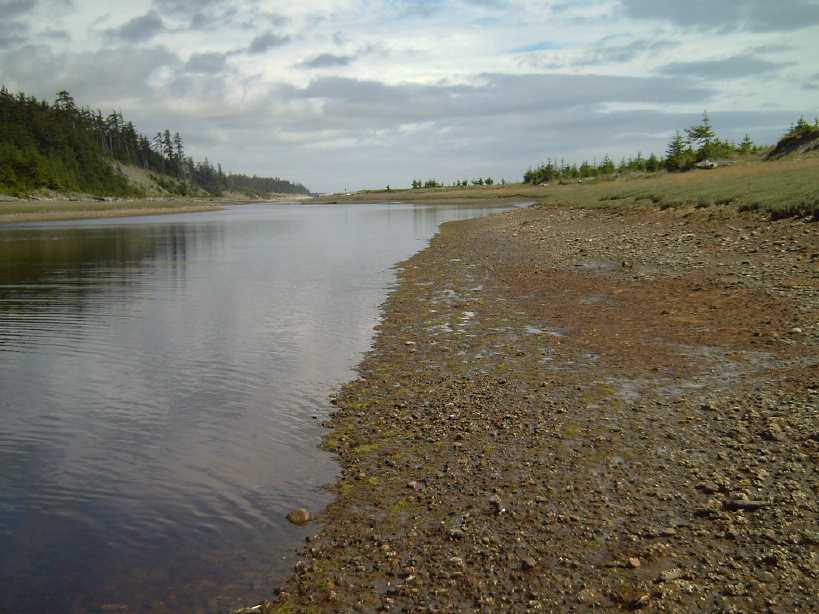
Tlell River Estuary 20 Km north of my place. The river
flows in and out for miles, covering the gravel at high tide.
(I didn't want to walk another Km right to the mouth.)
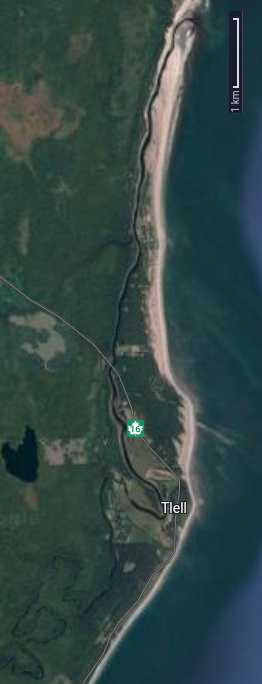
The unusual geography of Haida Gwaii east coast. Tides seem to cause a continual northward
flow of sand up the coast toward the north east corner, enlarging it and also causing the
mouths of rivers & streams to ever shift north. Someone told me that the Tlell now empties
out 1/2 mile north of "where it used to" when he was young.
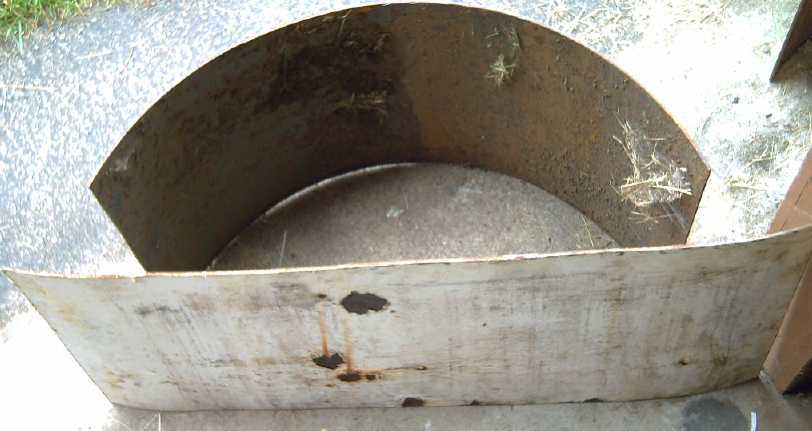
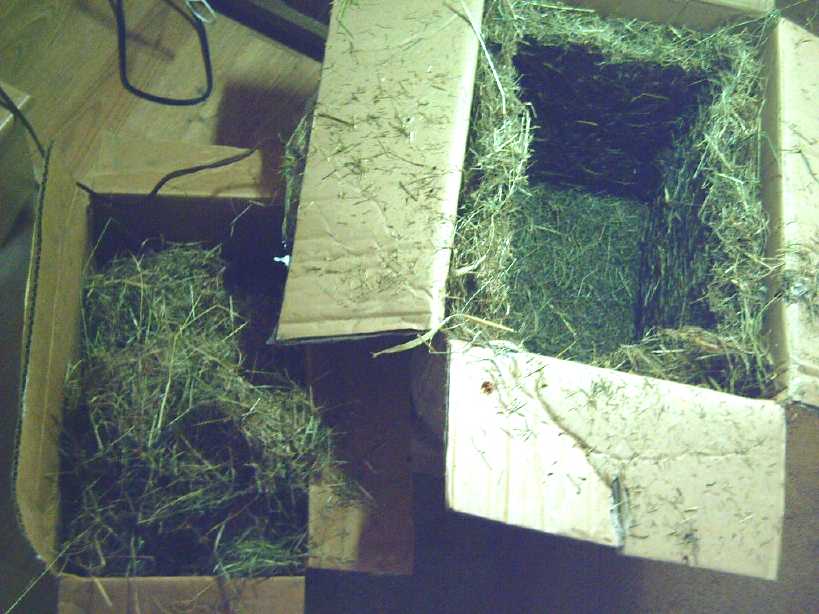 Seeing that cut & dried lawn grass dropped in filled 2 by 4 wall
stud spaces nicely
in June, I tested its effectiveness as building wall insulation using
cardboard boxes and a light bulb, comparing it with extruded styrene
foam (a known R-5 per inch) to find its "R" value was about R-3 per
inch - less
if it was put in very loosely, but seemingly not more by stuffing it in
harder than "just firm".
Seeing that cut & dried lawn grass dropped in filled 2 by 4 wall
stud spaces nicely
in June, I tested its effectiveness as building wall insulation using
cardboard boxes and a light bulb, comparing it with extruded styrene
foam (a known R-5 per inch) to find its "R" value was about R-3 per
inch - less
if it was put in very loosely, but seemingly not more by stuffing it in
harder than "just firm".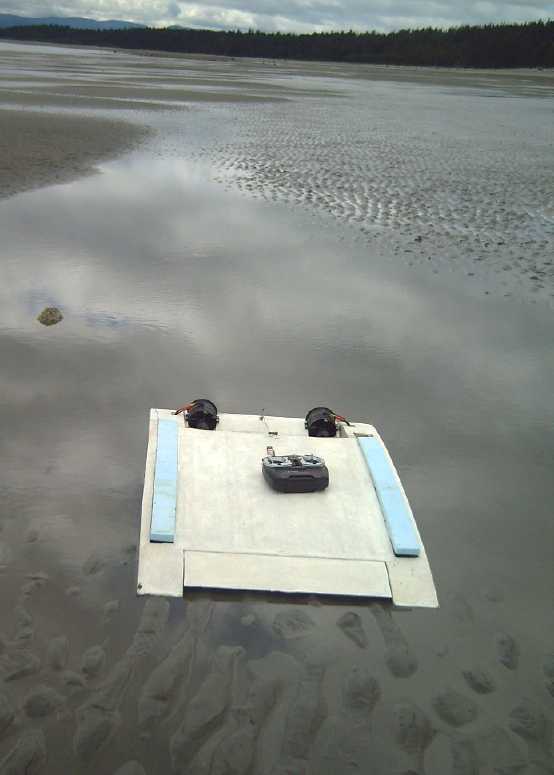 [July
32nd]
I
took
the
model
down
to
the
beach at low tide. I wasn't going to
put it in or even near the ocean: too wavy and a small but potential
chance of losing it.
[July
32nd]
I
took
the
model
down
to
the
beach at low tide. I wasn't going to
put it in or even near the ocean: too wavy and a small but potential
chance of losing it.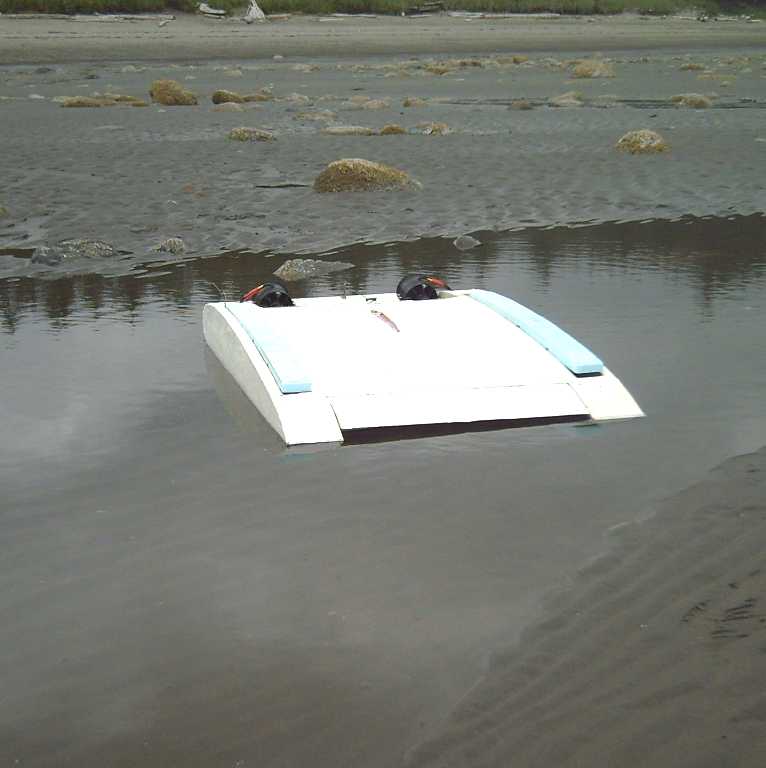 I moved it to
a smaller but deeper pool where it floated. Here I could taxi it around
and try controlling the direction. The left and right motors worked
very well for that, running just one motor causing a turn in a very
short radius - not quite a spin. But again the diagonal control - left
to right
for the right motor, top to bottom for the left motor - was really
confusing. And having "stop" at the top-left instead of the bottom was
so un-intuitive that virtually every time I went to stop, I
pulled the stick down (and usually right) and turned one or both motors
on full blast. Notwithstanding, I did manage to change the direction as
desired (usually powering just one fan at a time) and to go straight
forward a couple of times.
I moved it to
a smaller but deeper pool where it floated. Here I could taxi it around
and try controlling the direction. The left and right motors worked
very well for that, running just one motor causing a turn in a very
short radius - not quite a spin. But again the diagonal control - left
to right
for the right motor, top to bottom for the left motor - was really
confusing. And having "stop" at the top-left instead of the bottom was
so un-intuitive that virtually every time I went to stop, I
pulled the stick down (and usually right) and turned one or both motors
on full blast. Notwithstanding, I did manage to change the direction as
desired (usually powering just one fan at a time) and to go straight
forward a couple of times.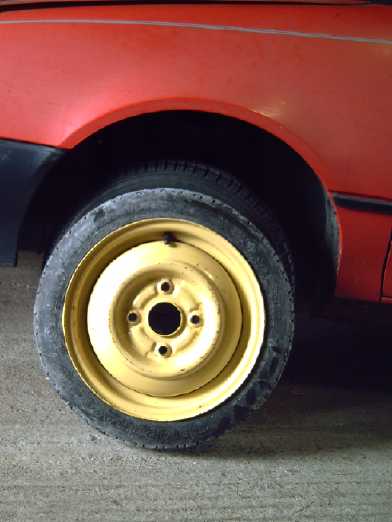 Where I had
thought to try a slightly higher reduction
ratio planetary gear (just 6 to 1 instead of 5 to 1) to see if that
would prevent the Sprint stalling on hills, it seemed that ratio
doesn't exist. Anyway that would only provide 20% more torque.
Where I had
thought to try a slightly higher reduction
ratio planetary gear (just 6 to 1 instead of 5 to 1) to see if that
would prevent the Sprint stalling on hills, it seemed that ratio
doesn't exist. Anyway that would only provide 20% more torque. The 2nd and 3rd were sunny and warm, and I noticed in the broom flowers
there were some honeybees with a higher pitched buzz than bumblebees.
But we didn't have such a nice day again for over (at least) two weeks.
Just clouds, overcast, cool - even cold.
The 2nd and 3rd were sunny and warm, and I noticed in the broom flowers
there were some honeybees with a higher pitched buzz than bumblebees.
But we didn't have such a nice day again for over (at least) two weeks.
Just clouds, overcast, cool - even cold.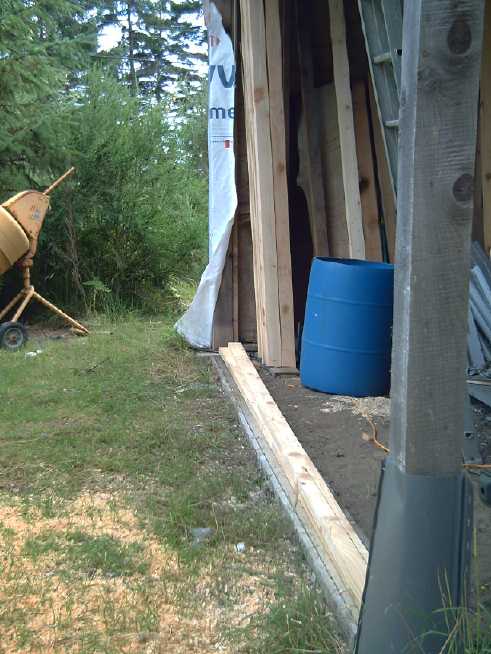 On the 15th I dug the trench for the little
concrete strip footing for under the sext section of wall. I really
have to get on with
this! (How can I install the dried lawn grass wall insulation until
it's an enclosure?) After that RVs under this roof are going to have to
be moved out. The next day I put in forms for the concrete. After
rinsing out 4 buckets of sand in the wheelbarrow on the 17th, it was
ready. On the 18th I mixed and poured concrete for the footing: wall
section #5
out of 8.
On the 15th I dug the trench for the little
concrete strip footing for under the sext section of wall. I really
have to get on with
this! (How can I install the dried lawn grass wall insulation until
it's an enclosure?) After that RVs under this roof are going to have to
be moved out. The next day I put in forms for the concrete. After
rinsing out 4 buckets of sand in the wheelbarrow on the 17th, it was
ready. On the 18th I mixed and poured concrete for the footing: wall
section #5
out of 8.
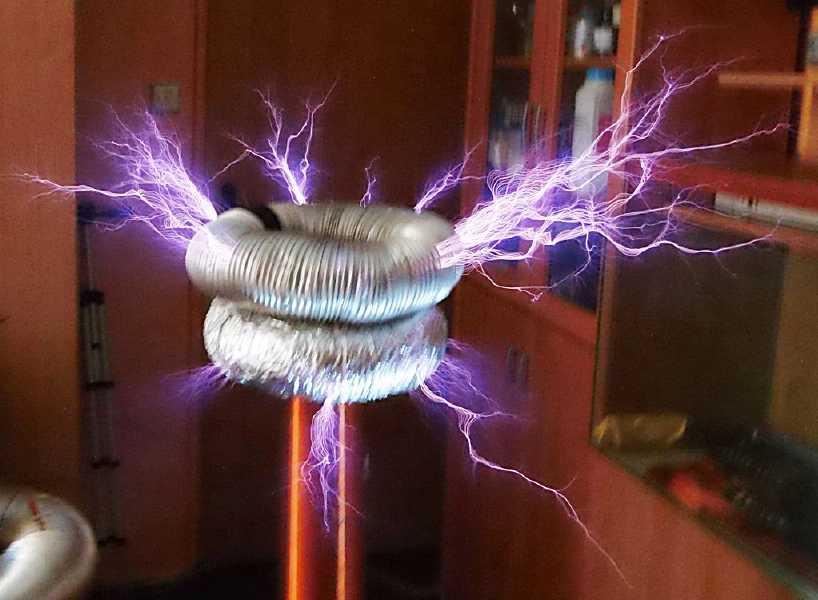 Tesla used such high voltage potentials
that he was making sparks and ionizing air. Maybe that's what's needed
to get the 'free energy' - at least the way Tesla got it? At least
thousands
of volts? Too bad what has survived of his work in the 'free energy'
area is so vague.
Tesla used such high voltage potentials
that he was making sparks and ionizing air. Maybe that's what's needed
to get the 'free energy' - at least the way Tesla got it? At least
thousands
of volts? Too bad what has survived of his work in the 'free energy'
area is so vague.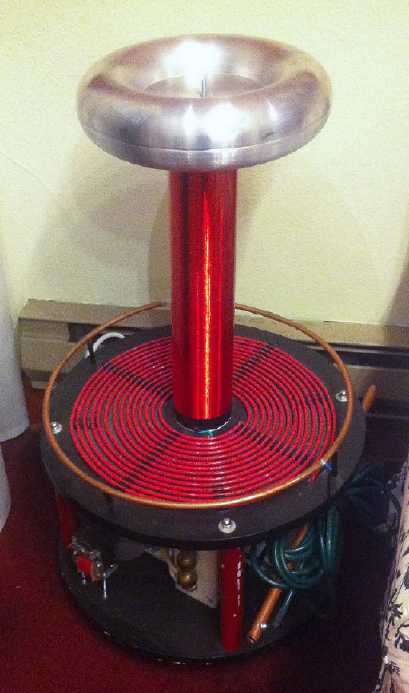 I
looked at some instructions for making Tesla coils, and watched a
couple of videos. How much energy is involved? One set of instructions
said "Bring it outside for its first run, as it really isn't safe to
run anything this potentially powerful indoors: there is a high risk of
fire." A commenter said he had made one at school and it punched a
hole
in the wall "...can u tell me what I just did?" Are the coils really
drawing so much energy out of a wall socket with (typicly) a
microwave oven transformer?
I
looked at some instructions for making Tesla coils, and watched a
couple of videos. How much energy is involved? One set of instructions
said "Bring it outside for its first run, as it really isn't safe to
run anything this potentially powerful indoors: there is a high risk of
fire." A commenter said he had made one at school and it punched a
hole
in the wall "...can u tell me what I just did?" Are the coils really
drawing so much energy out of a wall socket with (typicly) a
microwave oven transformer?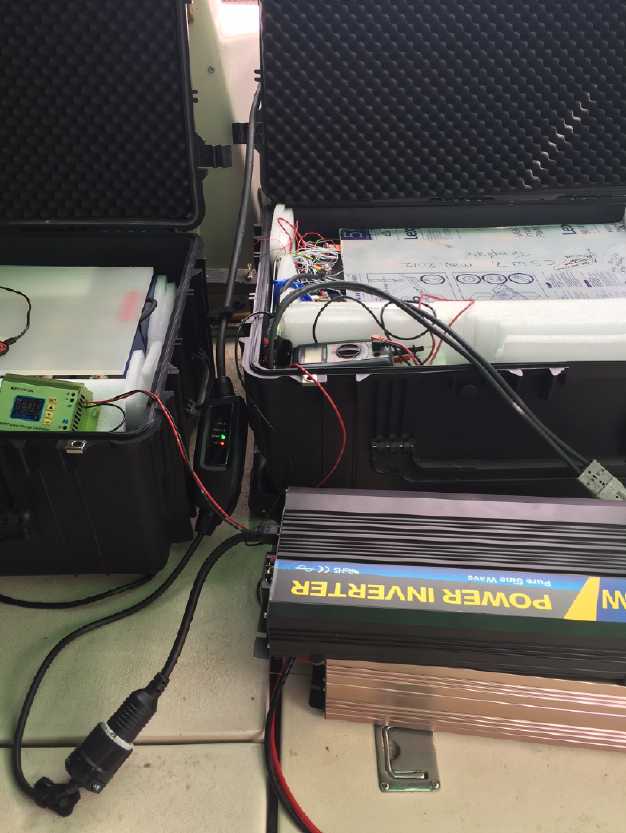
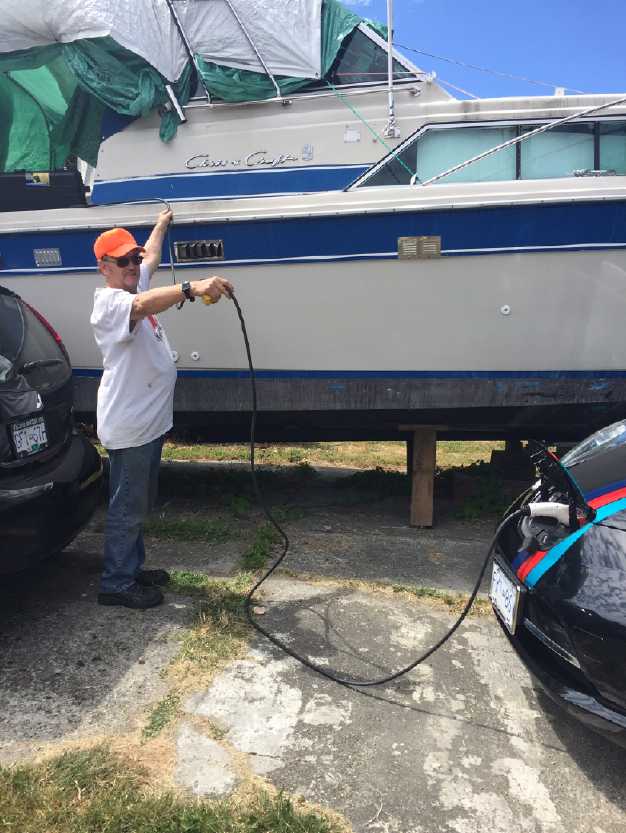
 I ran across
another ground effect craft design. This one has some features that
seem odd and awkward, but there are also some that (IMHO) would seem to
give it more potential for succeeding than the one I covered last month.
I ran across
another ground effect craft design. This one has some features that
seem odd and awkward, but there are also some that (IMHO) would seem to
give it more potential for succeeding than the one I covered last month. 1) With front pitch control
surfaces on the canard, why does it also have a rear elevator? It would
seem to be redundant, and instead it is very large. In fact, the canard
and its control surfaces seem disproportionately small. While it has
the vital front canard, I'm really not sure the whole subject of
blowing air under the wings for takeoff, along with having positive
pitch control from the canard, has been properly thought out.
1) With front pitch control
surfaces on the canard, why does it also have a rear elevator? It would
seem to be redundant, and instead it is very large. In fact, the canard
and its control surfaces seem disproportionately small. While it has
the vital front canard, I'm really not sure the whole subject of
blowing air under the wings for takeoff, along with having positive
pitch control from the canard, has been properly thought out.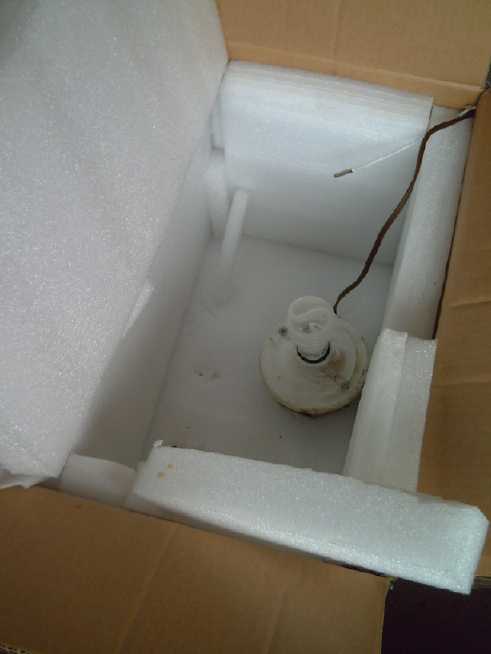 [4th] Test #1 -
Polyethylene Foam Insulation
[4th] Test #1 -
Polyethylene Foam Insulation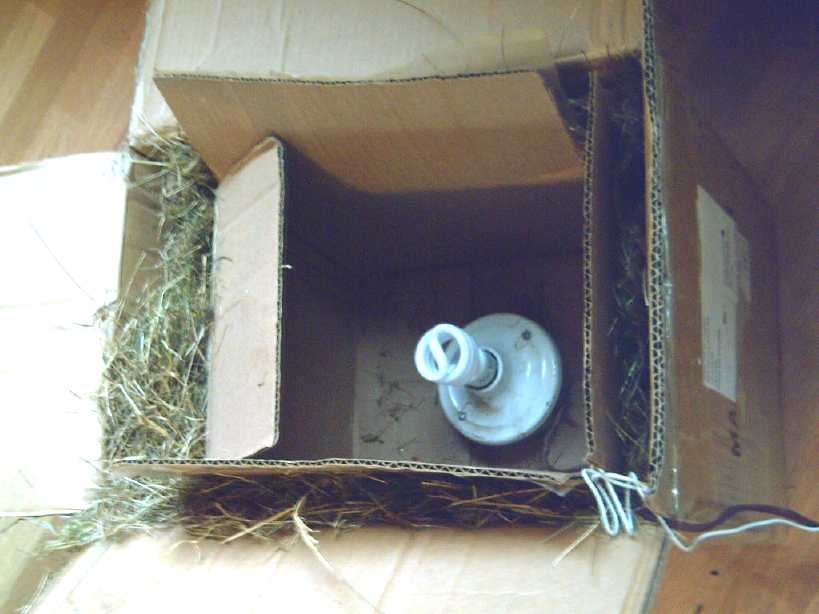 [5th] Test #2 -
Loosely packed grass:
[5th] Test #2 -
Loosely packed grass: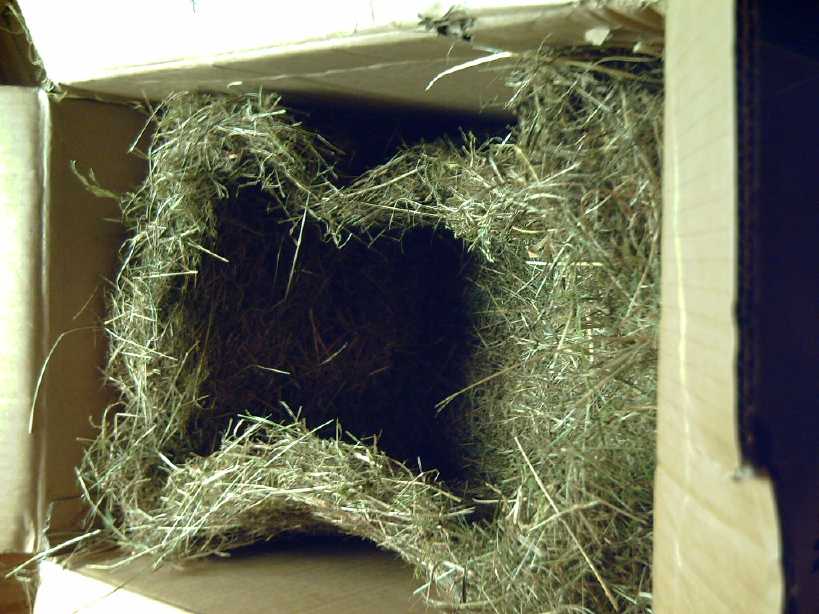
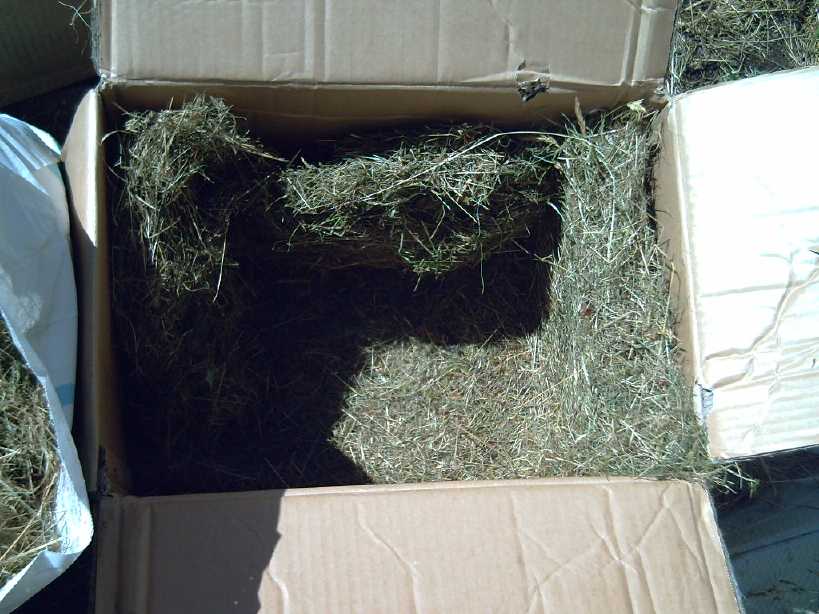
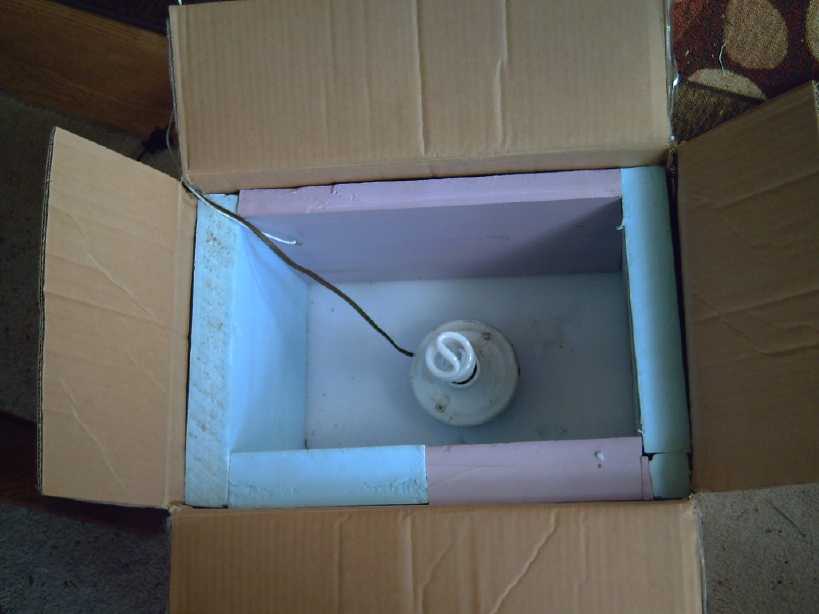 I found scraps
of PS insulation board in my storage, including pieces 1.5 inch thick.
I decided to use the 1.5" PE foam on the bottom so I could use matching
1.5" PS on the top. I figured that the least heat goes out the bottom,
and the bottom as in the previous tests would be on carpet anyway.
There was also just enough 1.5" PS for the ends. That left the two
sides to
be 1" and 2" thick, averaging 1.5".
I found scraps
of PS insulation board in my storage, including pieces 1.5 inch thick.
I decided to use the 1.5" PE foam on the bottom so I could use matching
1.5" PS on the top. I figured that the least heat goes out the bottom,
and the bottom as in the previous tests would be on carpet anyway.
There was also just enough 1.5" PS for the ends. That left the two
sides to
be 1" and 2" thick, averaging 1.5".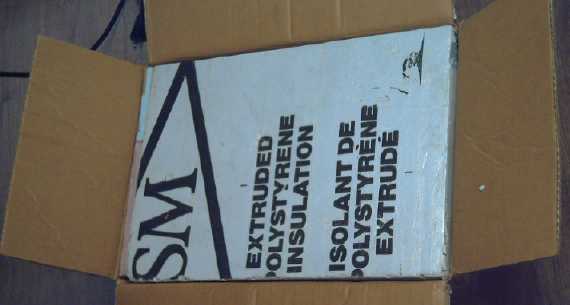 When I turned
it on, the temperature rose quickly, about the same speed as with the
PE foam. But where the PE foam temperature rise started to slow, the PS
foam continued going higher, hitting about 44° in 30 minutes. (The
temperatures it was getting to were actually making me nervous. Little
cracking sounds were coming from the box.) It finally started slowing
down above 45° or so. In 76 minutes it hit about 49.0° and
didn't seem inclined to go much or any higher, with the room having
risen from 20.9 to 21.7 - mostly in the last 10 minutes. So call it a
27.5° rise. So it really did seem to be substantially better than
PE foam.
When I turned
it on, the temperature rose quickly, about the same speed as with the
PE foam. But where the PE foam temperature rise started to slow, the PS
foam continued going higher, hitting about 44° in 30 minutes. (The
temperatures it was getting to were actually making me nervous. Little
cracking sounds were coming from the box.) It finally started slowing
down above 45° or so. In 76 minutes it hit about 49.0° and
didn't seem inclined to go much or any higher, with the room having
risen from 20.9 to 21.7 - mostly in the last 10 minutes. So call it a
27.5° rise. So it really did seem to be substantially better than
PE foam.